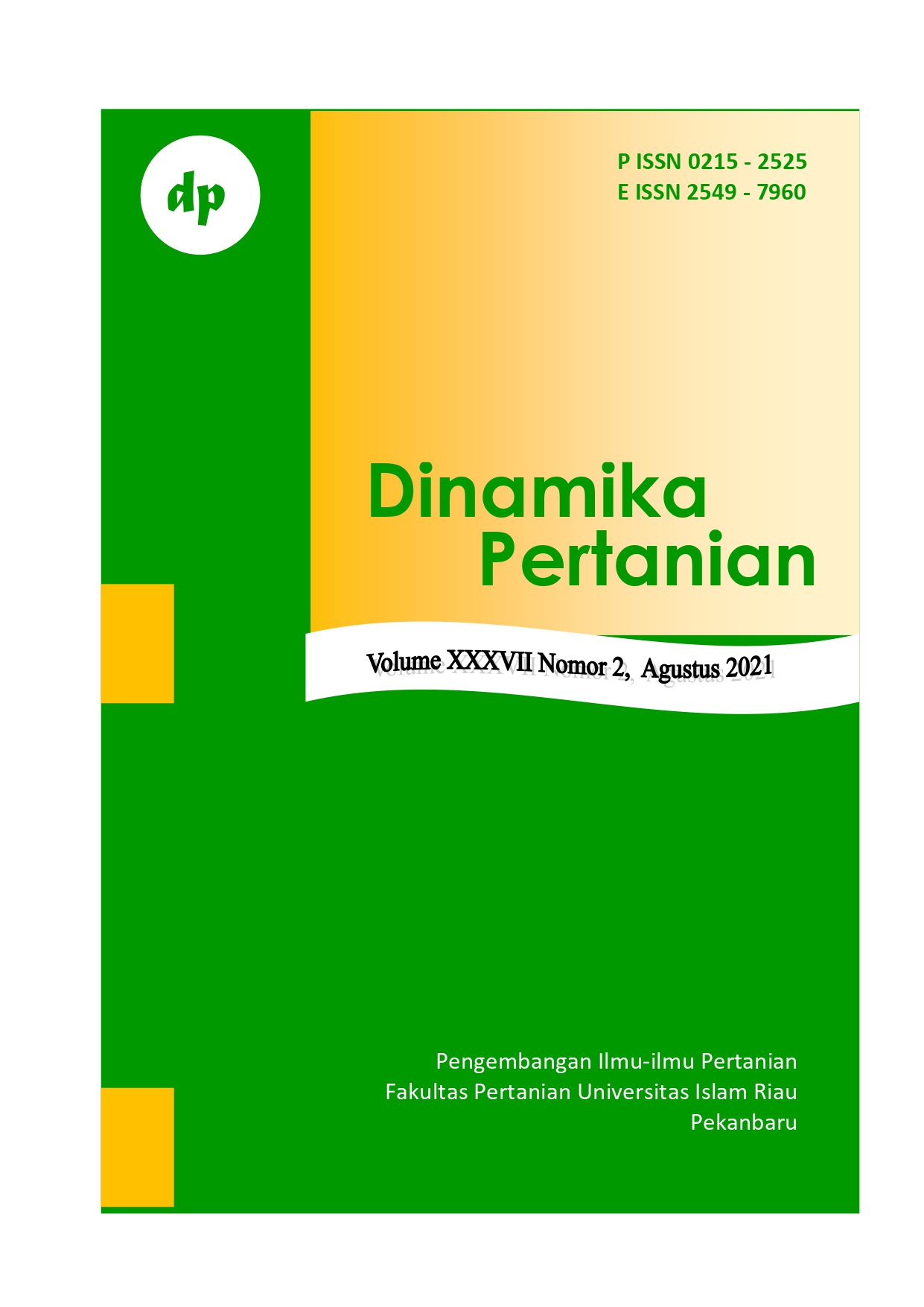APLIKASI KOMPOS TITONIA DAN LIMBAH CAIR SABUT KELAPA MUDA DALAM MENINGKATKAN PERTUMBUHAN TANAMAN STEVIA (Stevia rebaudiana) SECARA BERKELANJUTAN
DOI:
https://doi.org/10.25299/dp.2021.vol37(2).11849Keywords:
Coconut Coir, Stevia, Titonia CompostAbstract
This research was conducted at the experimental farm of the Faculty of Agriculture, Riau Islamic University, Pekanbaru during 5 months, starting from October 2019 to February 2020. The study used a Factorial Completely Randomized Design by using two factors. The first factor was titonia compost (T), consisting of 4 levels, namely 0, 0.5, 1.0, and 1.5 kg/plot and the second factor was young coconut coir liquid waste (S), consisting of 4 levels, namely 0, 100, 200, and 300 ml/plant so that 16 treatment combinations were obtained with 3 replications. Parameters observed were harvest age, plant height, number of branches, number of leaves, wet weight, and leaf weight. The data were analyzed using statistics and continued with the Honest Significant Difference Test (BNJ) at 5%. The results showed that the interaction of titania compost and young coconut coir wastewater affected harvest age, plant height, number of branches, wet weight, and dry weight with the best combination treatment of the application of titania compost was 1.5 kg/plot and the dose of young coconut coir wastewater was 200 ml/plant. The main effect of titania compost was significant on all observation parameters with the best treatment of titania compost at 1.5 kg/plot. The main effect of young coconut coir liquid waste was real on all observation parameters with the best treatment of 200 ml/plant.






